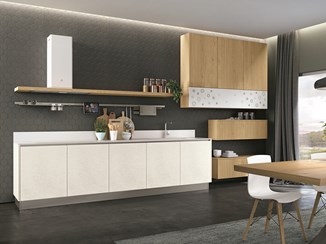Frankfurt kitchen was the world’s first fitted kitchen and was arranged by Austria’s first female architect Margarete Schütte-Lihotzky in 1926. The kitchen is a delayed consequence of a determined program known as New Frankfurt that followed World War I. In this period, Germany busy with the route toward building various public endeavours, including condominiums for the common labourers. Frankfurt was the point of convergence of designing someplace in 1925 and 1930 and the entire German city whose building was masterminded by current modellers. Kitchens Norwich also follows the traditional designing and designing accessories.
Schütte- Lihotzky was utilized by German architect Ernst May to plan the kitchen for the new little yet pleasant homes in Frankfurt. The Frankfurt Kitchen was arranged like a lab or creation line, underlining profitability and helpfulness.
The Frankfurt kitchen

The new kitchen was a little autonomous room, made particularly to oblige one individual cooking or cleaning as the mass-housing lofts were close to nothing. It was furthermore helpful since everything was inside straightforward reach. Up to that point, kitchens were rooms where people could eat, blend, play, and even rest. That changed with the new arrangement as the Frankfurt kitchen was related to the parlour by a sliding gateway, which made a little, autonomous space.
It was done with a turn stool, specific limit, a gas broiler, an adaptable rooftop light, a cover down squeezing board, and a removable refuse bureau. A brand name incorporates the aluminium storing holders that gave a clean relationship of flour, sugar, and rice, similar to basic pouring. As there were no electric ice chests in that period, a low-level coordinator was vented from an outside viewpoint to keep the food cold.
The brand name aluminium drawers
The squeezing board was annexed to the divider and could, without a doubt, be cut down if essential. The materials for a particular limit were meticulously picked, like the oak compartments that rebuffed mealworms, and beech cutting surfaces, impenetrable to recolouring and sharp edge marks. The pantries were painted blue, as it was acknowledged sky-concealed surfaces would dishearten bugs.
The Frankfurt kitchen seemed to have everything: it was moderate, of lower advancement costs, and less work for the occupants. These features convinced the Frankfurt city social occasion to allow the foundation of the kitchens, and after a short time, they were acclaimed to the guide that from 1926 toward 1930, each respectful space in Frankfurt had one. About 10,000 townhouses were worked with the Frankfurt Kitchen. It was an enormous accomplishment, for the most part, communicated in Germany and abroad.
Schütte-Lihotzky arranged three generous sizes of the kitchen for different parts of lofts. Nevertheless, a segment of the customers experienced issues with the kitchen. It was portrayed as not versatile enough and exorbitantly little for two people to work in. Amusingly, standard kitchens in Germany from the 1930s until the 1960s were regularly impressively humbler than and not as pleasing as the Frankfurt kitchen. During the 1960s and 1970s, Frankfurt kitchens were displaced with present-day kitchens.
The electric stove of the kitchen
In the last aspect of the 1990s, created by Margarete Schütte-Lihotzky was before long brought to the front, yet by then, only two or three the principal kitchens persevere. Regardless, a couple of homes have proliferations. The principal Frankfurt Kitchen is appeared in the Ernst May Haus and Chronicled focus in Frankfurt. In 2005, the Victoria and Albert Exhibition in like manner recalled a Frankfurt kitchen for its travelling show.
